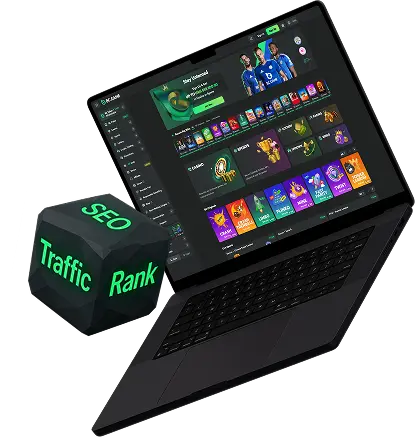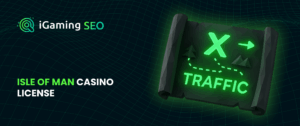
Estonia, being part of the European Union, runs a straightforward and well-respected licensing setup for iGaming, covering things like online casinos and betting on sports. This approach lets businesses operate under clear guidelines that stress honesty, security, and looking after players. The estonia iGaming license gets attention for matching EU rules, which draws in firms eager to jump into online gambling. In this overview, we break down the basics of applying for and holding onto this license, plus its impact on operators from all over.
Why Estonia iGaming License is in Demand
What makes the Estonia iGaming license so sought after ties back to Estonia’s EU membership, which unlocks a big chunk of the European market. Holders can extend their reach to users in other EU spots without major roadblocks, leaning on the bloc’s rules for moving services freely. Take targeting folks in Germany or Sweden; it’s doable if you stick to any extra local regs.
Beyond that, the estonia iGaming license carries real weight in terms of reliability. Managed by the Estonian Tax and Customs Board, known as EMTA, it proves an operator plays by serious rules. With scams being a big worry in gambling, this kind of backing pulls in players and helps keep them loyal. It also smooths things over with banks and payment folks, who are quicker to get on board.
Estonia’s reputation for tech innovation sweetens the deal. Think e-residency and all that; it encourages fresh ideas in iGaming, like blending in blockchain tech. For operators keen on modern twists without breaking laws, this fits perfectly. At the end of the day, the Estonia iGaming license isn’t just a stamp of approval; it’s a solid route to building up in a crowded field.

Key Requirements for an Estonia iGaming License
Landing an Estonia iGaming license calls for ticking off a bunch of tough boxes to guarantee stability and trustworthiness. Start with forming a company right in Estonia or elsewhere in the EU, such as a limited outfit dedicated purely to gambling activities. If you’re from outside the EU, e-residency makes it easier to run things from afar.
On the money side, minimum capital depends on what you’re offering. Chance games like slots demand at least a million euros. For betting, it’s 130,000 euros, and skill-based stuff needs 25,000 euros. You’ve got to show this is locked in with proper bank proof, all to safeguard player money.
Sticking to AML and KYC is a must. That means setting up checks for who players are, keeping an eye on transactions above 2,000 euros, and reporting anything fishy. It connects to Estonia’s list for excluding certain people.
Background checks hit owners and key staff hard. Big shareholders or board members need spotless records, no shady gambling past or financial messes. Tech requirements include safe servers, verified RNGs, and hooks into EMTA’s oversight systems.
You’ll need to hand over passports, company docs, financial projections, game descriptions, and AML strategies. Sometimes, outside pros test the software. These hurdles ensure only credible outfits snag an Estonia iGaming license, keeping the whole scene solid.
Types of Estonia iGaming License Available
The Estonia iGaming license breaks down into activity licenses and operating permits, each handling different sides of the business. The activity one grants lasting permission for specific gambling categories, and you apply for each separately: chance for casinos, toto for bets, skill games, and lotteries.
Casinos fit under chance, including slots and card tables. Betting handles sports predictions. Lotteries come with caveats; major ones stay with the state, but smaller business versions can work under limits.
The operating permit kicks off the actual running, good for up to five years online. It demands evidence of tech that meets EMTA specs and ties into their monitoring.
B2B sides get certifications for supplying software, skipping the full operator route. This lets specialists handle things like platforms or payouts.
Many operators grab a mix to broaden their lineup, turning the Estonia iGaming license into a versatile tool for everything from targeted niches to wider growth.

Main Benefits of an Estonia iGaming License
Having an Estonia iGaming license delivers clear upsides that strengthen an operator’s global standing. The big one is EU-wide validity, which cuts through borders smoothly. This opens up a massive market, on track to hit over 100 billion euros a year before long.
It ramps up confidence: users view the Estonia iGaming license as a mark of solid practices, boosting stick-around rates. Financial partners jump in faster, with favorable setups for handling money.
Tax perks help too: just 20 percent on distributed earnings, and no VAT for gambling in the EU. E-residency keeps remote management straightforward and cost-effective.
Built-in compliance features, like opt-outs and spending caps, promote safe play and polish your image. With regs getting stricter, this puts you ahead as a responsible player.
Room for new ideas shines through, allowing things like crypto payments or smart personalization. All told, these advantages position the Estonia iGaming license as a smart pick for enduring progress.
Costs and Process of Getting an Estonia iGaming License
Figuring out the expenses and steps for an Estonia iGaming license takes solid groundwork. Registering a company might set you back 200 to 500 euros initially, then 5,000 to 10,000 yearly for upkeep like accounting.
Core fees include 47,940 euros for chance activity licenses, 31,960 for toto, and 3,200 for skills. Permits tack on 3,200 per category. These go straight to the finance ministry.
After that, expect 6 percent on gross gaming revenue each month. Corporate tax hits 20 percent only on payouts. Other hits: legal advice at 10,000 to 20,000, certifications over 5,000, and tech links from 10,000 to 50,000.
The flow starts with activity applications docs and payments to EMTA, reviewed in four to six months. Next, operating permits take two to four more. Online setups need audits and connections.
It usually wraps in three to six months, though experts can trim time and dodge pitfalls. The investment in an Estonia iGaming license often pays back through better reach and efficiency.
Compliance Under an Estonia iGaming License
Keeping up with an Estonia iGaming license involves steady adherence to acts like the Gambling one and data protection rules. AML demands scrutiny on large transactions and alerts to authorities.
For responsible practices: sync with exclusion registries, confirm ages (21 for luck games, 18 for wagers), and provide controls like time-outs.
Yearly checks on fairness generators, plus monthly filings. Promotions have to be straight-up, including cautions, and steer clear of kid-focused stuff.
Handle data securely, and crypto follows specific loops. Slip-ups could lead to hefty penalties or pulling the license.
Dedicated staff or programs for regular internal spots keep things in line, bolstering the Estonia iGaming license environment.

Is Estonia iGaming License Right for Your Business
To sum it up, whether an Estonia iGaming license works for you depends on your aims and readiness for high bars. It’s spot-on for businesses chasing EU expansion with a focus on quality and fresh approaches.
Less ideal for tight-budget newcomers or those eyeing outside Europe. For scaled-up operations, it lays a firm groundwork blending respectability with real-world ease.
If your plans line up, going for the Estonia iGaming license could push your venture ahead. Reach out to specialists to see if it matches your setup.



